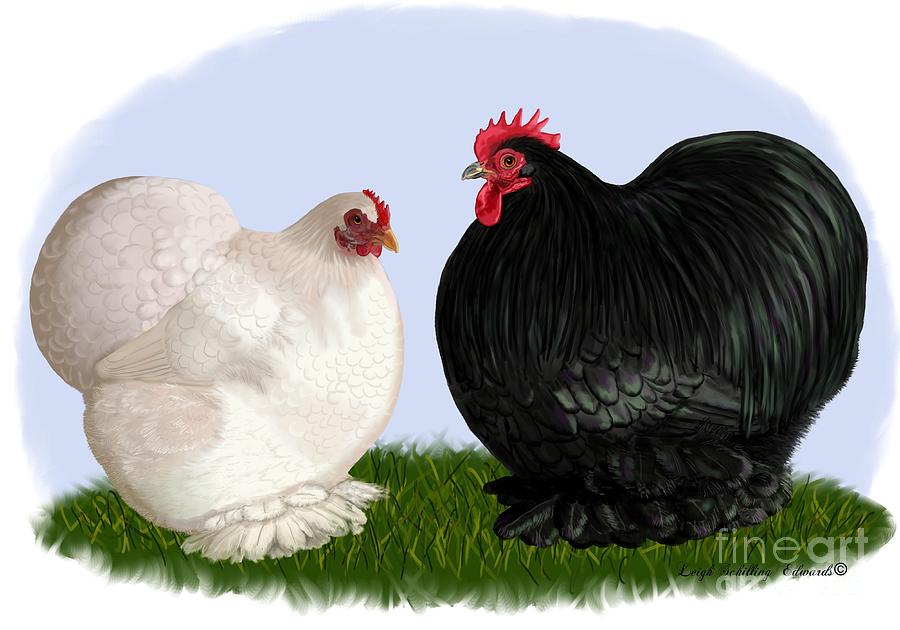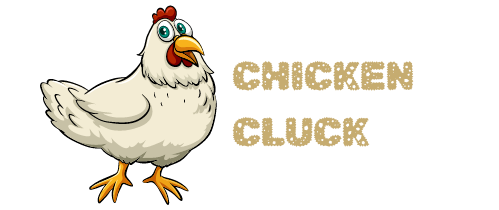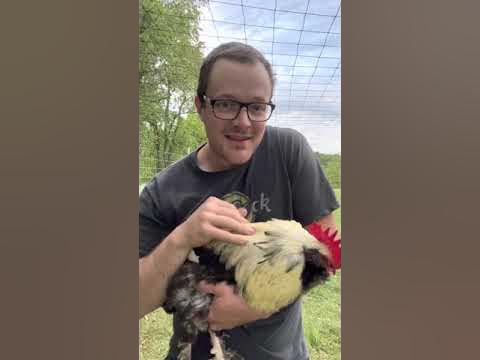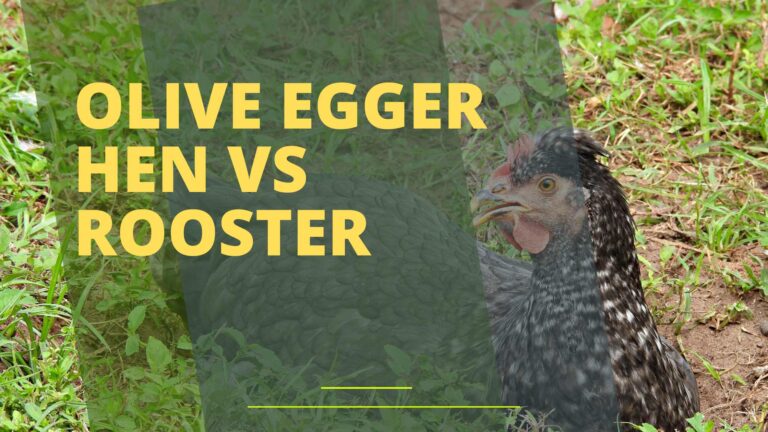The Cochin rooster boasts an impressive plumage compared to its female counterpart, the hen. Hens are generally smaller and exhibit less-feathered legs than the roosters.
Descendants of the Chinese Langshan, Cochins are known for their exceptional size and soft, fluffy feathers. These birds make a striking impression with the roosters showcasing a grand tail and voluminous hackle feathers, distinguishing them clearly from hens. Cochin chickens are prized for their docile nature and ability to add an ornamental flair to any backyard flock.
Hens are cherished for their broodiness and consistent egg-laying, albeit with smaller eggs. The Cochin breed, as a whole, ushers a sense of Victorian elegance to poultry enthusiasts, making them a favorite for shows and as pets. Their adaptability to confinement also plays into their popularity amongst urban and rural poultry keepers looking for a gentle and charismatic breed.
Credit: www.backyardchickens.com
The Cochin Breed: Origins And Characteristics
The Cochin chicken stands out with its impressive size and fluffy feathers. This breed captures hearts with its friendly nature. Originating from China, Cochins reached Western shores in the 19th century. They quickly became favorites in poultry shows and backyards for their appearance and temperament. Let’s dive deeper into the rich history and specific traits of the Cochin breed.
History Of The Cochin Chicken
The Cochin chicken rose to fame in the 1840s. Queen Victoria received some as a gift. They soon became a symbol of status in Europe. Known originally as Chinese Shanghai fowl, their name changed to ‘Cochin’ later.
Physical Attributes Common To Both Roosters And Hens
Cochin roosters and hens share many features. They both have a round, sturdy body and feathered legs. Here’s what they typically showcase:
- Large size: Among the largest poultry breeds.
- Soft feathers: Dense and fluffy, covering their body.
- Color variations: From black to blue, and partridge.
- Friendly demeanor: Known for their calm and gentle nature.
Crowing Into Differences: Cochin Rooster Traits
When it’s time to tell Cochin roosters from hens, certain traits never lie. It’s a fascinating spectacle to uncover the unique qualities that set them apart. Let’s peck into the world of Cochin roosters and discover what makes these feathered fellows stand out in the barnyard.
Distinctive Features Of A Cochin Rooster
Bright plumage and royal posture mark the Cochin rooster. Look for these signs:
- Comb and wattles: Larger and brighter red compared to hens.
- Feathers: Long, showy tail feathers fan out in a majestic display.
- Body size: Roosters boast a bolder and more robust frame.
| Feature | Cochin Rooster | Cochin Hen |
|---|---|---|
| Size | Larger | Smaller |
| Tail | Sickle feathers | Shorter, rounded |
| Comb/Wattle | Larger, vibrant | Smaller, duller |
Behavioral Patterns Unique To Males
Behavior never lies when spotting a Cochin rooster. From the powerful crow to the protective march, these males are full of character:
- Dawn chorus: Roosters greet the day with a resounding crow that hens lack.
- Territory: Males stand guard, claiming space with confidence.
- Strut: A rooster’s walk is a proud and deliberate strut, showcasing authority.
A Cochin rooster’s behavior reveals much about his role in the flock. At the heart of the group, he rules with both flamboyance and might.
Grace And Beauty: Cochin Hen Qualities
Cochin hens boast an elegant plumage, embodying grace and beauty alongside their rooster counterparts. While both genders share the breed’s signature fluffy feathers, hens often exhibit softer, subtler color variations that add to their charm.
The Cochin chicken, a feathery vision of elegance, boasts a myriad of qualities making it a prized breed. Known for their full plumage, calm demeanor, and motherly instincts, Cochin hens stand apart in the poultry world. Let’s unravel the unique characteristics that elevate these gentle giants among backyard flocks.
Egg-laying And Broodiness In Cochin Hens
Despite not being the most prolific layers, Cochin hens offer consistency in their egg production. They typically lay 2-3 eggs per week, often blessing owners with lovely brown eggs. Their broodiness, however, is where they shine. Cochins are natural mothers, known to sit on eggs persistently, even those not their own. This trait can be beneficial for hatching eggs from other breeds.
- Light brown eggs
- Consistent layers
- Exceptional mothering skills
Physical Appearance Differences In Females
Identifying a Cochin hen from a rooster goes beyond the crow. Females exhibit subtler, more refined features with their feathers playing a pivotal role. Under their lavish feathered dresses, hens tend to be smaller, with a rounded, soft demeanor. Roosters, on the other hand, are more upright and boast an impressive flow of tail feathers.
| Characteristic | Hen | Rooster |
|---|---|---|
| Size | Smaller | Larger |
| Feather Texture | Soft and Fluffy | Long and Flowing |
| Posture | Rounded | Upright |
With these insights, the distinction between a Cochin hen and rooster becomes clearer. Their allure lies not just in their egg-laying capacity or stature but in their quintessential demeanor and striking looks.

Credit: fineartamerica.com
The Exhibition Stage: Showing Off Cochins
Cochin chickens steal the spotlight with their fluffy feathers and regal stance. Both roosters and hens have unique traits that shine in shows. Judges closely inspect these birds for specific standards. Let’s dive into the dazzling world of Cochin exhibition!
Standards For Cochin Roosters In Shows
At shows, Cochin roosters must look imposing and majestic. Judges look for these points:
- Feather condition: Glossy, full, and clean.
- Body shape: Round with a deep chest.
- Carriage: Upright and confident.
- Comb and wattles: Bright red and well-formed.
Roosters must also have even feathering on their feet. A table of traits judged is shown below:
| Trait | Description |
|---|---|
| Size | Large with a balanced body. |
| Color | Vivid and true to the breed. |
| Temperament | Docile and calm. |
| Feet | Feathered with no bare spots. |
How Cochin Hens Are Judged Differently
For Cochin hens, judges focus on these attributes:
- Feather quality: Soft and abundant.
- Body form: Round just like roosters but slightly smaller.
- Posture: Poised and graceful.
- Comb size: Smaller than roosters, but still red and neat.
For hens, judges also pay attention to the symmetry of plumage and if they display good mothering capabilities. A comparison is outlined below:
| Trait | Rooster | Hen |
|---|---|---|
| Size | Larger with grander stature. | Smaller, yet still full-bodied. |
| Comb | Large and striking. | Proportionate to head size. |
| Feathers | Longer and more flowing. | Smoother with a snug fit. |
Living With Cochins: Backyard Compatibility
Welcome to the charming world of Cochins, a delightful breed known for their fluffy feathers and endearing personalities. Understanding the nuances of keeping Cochins in your backyard ensures a harmonious environment for both roosters and hens. Let’s delve into the specific needs that allow these feathered companions to thrive.
Space And Environment Needs For Roosters
Space: Roosters require ample space for exercise and territorial activities.
- Minimum of 8 square feet per rooster in a coop
- Additional outside space for foraging and social interaction
- Protected from predators and extreme weather
- Perches for roosting and accessories for entertainment
Caring For Hens: Nesting And Comfort
Nesting: Hens seek cozy and tranquil nesting sites to lay eggs.
- One nesting box for every four hens
- Straw or wood shavings for bedding
- Proper ventilation and insulation
- Access to clean water and a balanced diet
Breeding Cochin Chickens: Considerations And Tips
Embracing the art of breeding Cochin chickens requires knowledge and patience. Cochin chickens, admired for their fluffy plumage and gentle nature, are a popular breed among chicken enthusiasts. Successful breeding not only enhances flock health but also maintains breed standards. This guide presents essential tips and considerations for breeding Cochins.
Selecting Roosters And Hens For Breeding
The first step in breeding Cochin chickens is to select the right roosters and hens. Ideal candidates exhibit strong health, vitality, and characteristics true to the breed.
- Look for vibrant feathers, clear eyes, and active behavior.
- Avoid birds with obvious defects or illnesses.
- Choose roosters and hens with complementary traits for balanced offspring.
Genetic Traits And Offspring Expectations
Understanding genetics is crucial when breeding Cochins. Offspring inherit traits from their parents, and breeders aim for desirable characteristics.
| Parent Traits | Offspring Expectations |
|---|---|
| Feather Quality | Plush, full plumage |
| Body Size and Shape | Sturdy and rounded |
| Temperament | Calm and friendly |
Document lineage and traits for future reference. This practice helps in predicting how chicks will develop.
Feathered Friend Or Foe: Social Dynamics
The Cochin chickens, with their fluffy feathering and docile nature, paint a serene picture in any backyard. But beneath this calm exterior lies a complex social structure, ruled by instincts and daily interactions. Understanding the dynamics between the imposing rooster and the bustling hens helps us appreciate not just their beauty, but their behavior within the flock.
Rooster Interactions: Dominance And Flock Management
The Cochin rooster stands proud at the top of the flock’s hierarchy. His role is both protector and leader. Truly the feathered king amidst his subjects.
- Guarding the flock against potential predators
- Determining feeding pecking order
- Maintaining order and peace among hens
| Behavior | Rooster’s Role |
|---|---|
| Crowing | Asserting presence and territory |
| Mating | Ensuring flock’s continuation |
| Pecking | Establishing dominance |
Hen Social Hierarchy And Pecking Order
The Coop’s social ladder is not just for roosters. Hens have their pecking order too, dictated by age, personality, and sometimes, feather color.
- Older hens often claim the top ranks.
- Younger birds or new members may find themselves at the bottom rung.
- Pecking order influences access to food, nesting sites, and even water.
The Cochin hen hierarchy is dynamic and can change due to various factors:
Seasonal changes, flock changes, and health.
With respect to overall flock health, a balanced hierarchy ensures unity and productivity. All members, rooster, and hens, contribute to this feathered society each day.
Credit: www.backyardchickens.com
Health And Wellness: Cochin Care Requirements
Cochin chickens, known for their magnificent plumage and gentle nature, thrive with proper care. Understanding Cochin-specific needs is vital. Ensuring optimal health for both roosters and hens requires meticulous attention to nutritional needs and disease prevention. Let’s delve into their care essentials.
Nutritional Needs For Vibrant Plumage
Lush, vibrant feathers are a hallmark of the Cochin breed. A balanced diet is essential for maintaining their stunning appearance. Feed choices should be rich in protein and essential nutrients.
- Protein: Key for feather growth. Provide high-quality poultry feed.
- Vitamins: A, D, and E support feather health. Include greens and supplements.
- Minerals: Calcium, phosphorus, and others fortify feathers. Offer a varied diet.
Common Health Issues In Roosters And Hens
Like all poultry, Cochin roosters and hens can encounter health issues. Recognize and treat common ailments for robust flocks.
| Health Issue | Symptoms | Prevention/Treatment |
|---|---|---|
| Parasites (Mites/Lice) | Itching, feather loss | Regular dust baths, coop cleanliness |
| Respiratory Diseases | Coughing, sneezing | Ventilation, vaccination |
| Fatty Liver Syndrome | Weight loss, lethargy | Proper diet, exercise |
Keep an eye out for abnormal behavior or physical signs of distress. Prompt attention and care can prevent complications.
Conclusion
Deciding between a Cochin rooster or hen boils down to your needs. Cochin roosters offer striking plumage and natural flock guardianship, while hens provide consistent egg laying and motherly instincts. Both enhance backyard poultry flocks with their calm demeanors and hardiness.
Remember, choosing depends on space, purpose, and personal preference. Happy farming!




